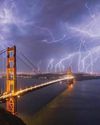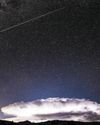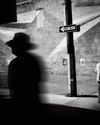Want to Reveal the Invisible? Try Long Exposures

WANT TO SEE SOMETHING YOU DON’T SEE EVERY DAY—something, in fact, you can’t really see at all?
I’m talking about the passage of time— well, really the cumulative effect of what’s happening over time—captured in one image. Long exposures will allow you to do that. They can be comparatively long—a half second rather than, say, 1/125 or 1/250 second—or really long; one of the photos here took five-and-a-half minutes. Here’s how it works.
I start by visualizing what’s likely to happen in the scene over a period of time. I have to take into account several things when I compose the shot. Depending on the scene and the situation, that could be the speed of clouds moving across the sky, the flow of water in a stream, the rush of waves to the shore. Then I set up my camera and tripod to capture what I imagine, or expect, will take place.
My first step is to meter the scene and take a properly exposed image based on the depth of field I want for the image. I usually go for a lot of depth of field, so my f/stops for this type of photography are generally in the f/11 to f/22 range.
This story is from the May 2017 edition of Shutterbug.
Start your 7-day Magzter GOLD free trial to access thousands of curated premium stories, and 8,500+ magazines and newspapers.
Already a subscriber ? Sign In
This story is from the May 2017 edition of Shutterbug.
Start your 7-day Magzter GOLD free trial to access thousands of curated premium stories, and 8,500+ magazines and newspapers.
Already a subscriber? Sign In

“The Pano Rocks!”
THIS ONE SURE DOES, AND FOR MORE REASONS THAN YOU MIGHT EXPECT

Landscapes In Motion
HOW MICHAEL SHAINBLUM CAPTURES HIS TRULY BREATHTAKING IMAGERY

Shooting Stars
PREPARED FOR A METEOR SHOWER, A PHOTOGRAPHER FINDS THE NIGHT HAS A FEW SURPRISES IN STORE.

Shake It Up
EXPLORE CREATIVE TECHNIQUES TO ADD VARIETY TO YOUR PHOTOS.

Life Lessons
HOW INSTAGRAM AND AN IPHONE TURNED A HOBBY INTO A SECOND CAREER

Shutter To Think
EVERYTHING YOU ALWAYS WANTED TO KNOW ABOUT CAMERA SHUTTERS BUT WERE AFRAID TO ASK

Monochrome Master
THE BLACK-AND-WHITE MAGIC OF MAX VADUKUL

True Grit
CAPTURING AMERICAN TRADITIONS IN TIMELESS BLACK-AND-WHITE IMAGES.

Treasure Chest
WHAT’S THE REAL ATTRACTION—THE PHONE’S CAMERA OR THE CREATIVITY OF ITS APPS?

Invisible Man
HOW DAVID INGRAHAM TAKES STREET PHOTOGRAPHY BEYOND TRADITION.